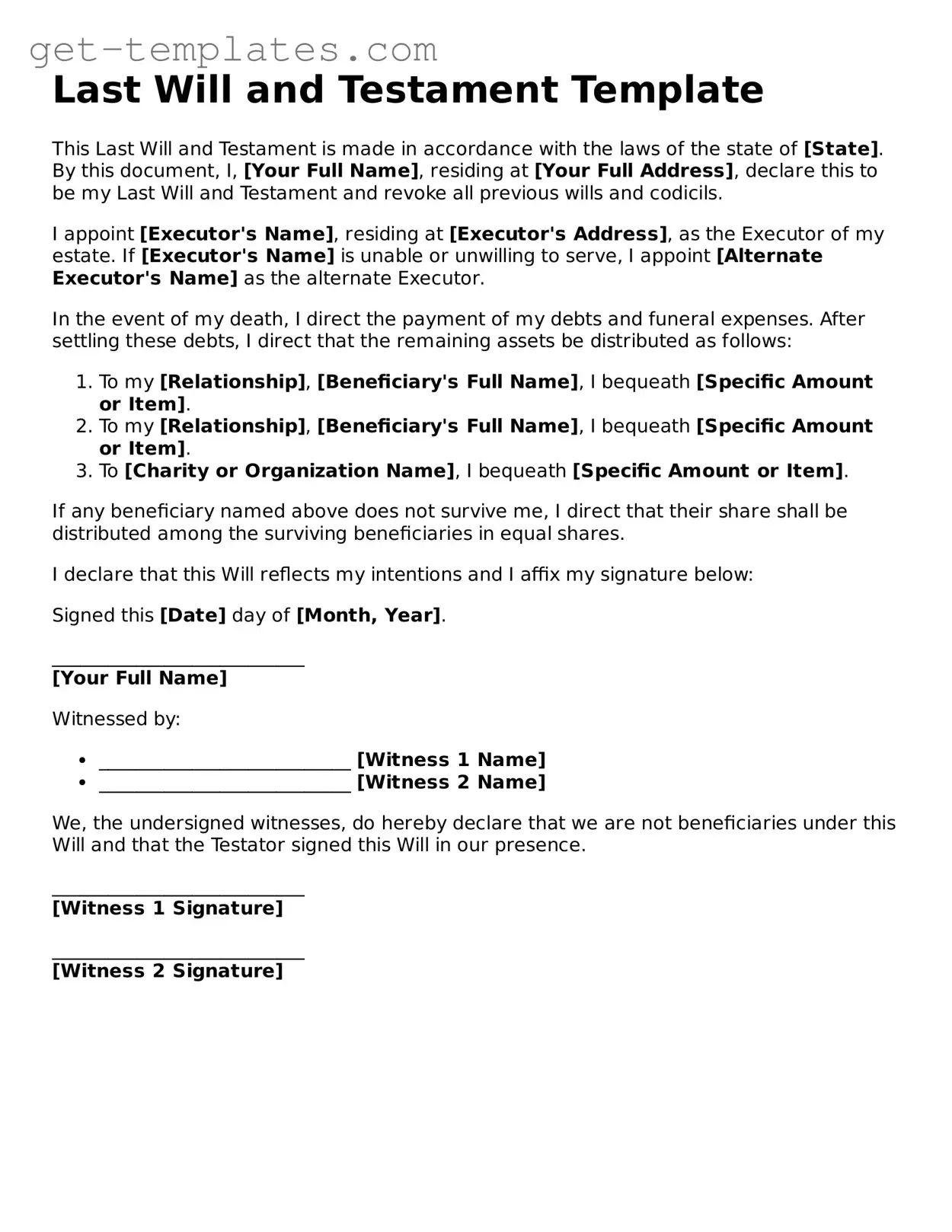Last Will and Testament Template
This Last Will and Testament is made in accordance with the laws of the state of [State]. By this document, I, [Your Full Name], residing at [Your Full Address], declare this to be my Last Will and Testament and revoke all previous wills and codicils.
I appoint [Executor's Name], residing at [Executor's Address], as the Executor of my estate. If [Executor's Name] is unable or unwilling to serve, I appoint [Alternate Executor's Name] as the alternate Executor.
In the event of my death, I direct the payment of my debts and funeral expenses. After settling these debts, I direct that the remaining assets be distributed as follows:
-
To my [Relationship], [Beneficiary's Full Name], I bequeath [Specific Amount or Item].
-
To my [Relationship], [Beneficiary's Full Name], I bequeath [Specific Amount or Item].
-
To [Charity or Organization Name], I bequeath [Specific Amount or Item].
If any beneficiary named above does not survive me, I direct that their share shall be distributed among the surviving beneficiaries in equal shares.
I declare that this Will reflects my intentions and I affix my signature below:
Signed this [Date] day of [Month, Year].
___________________________
[Your Full Name]
Witnessed by:
- ___________________________ [Witness 1 Name]
- ___________________________ [Witness 2 Name]
We, the undersigned witnesses, do hereby declare that we are not beneficiaries under this Will and that the Testator signed this Will in our presence.
___________________________
[Witness 1 Signature]
___________________________
[Witness 2 Signature]
